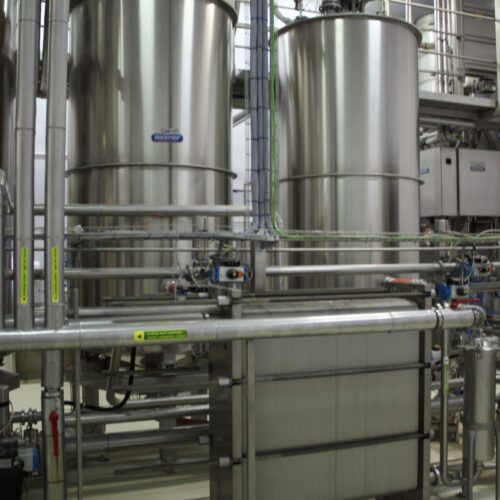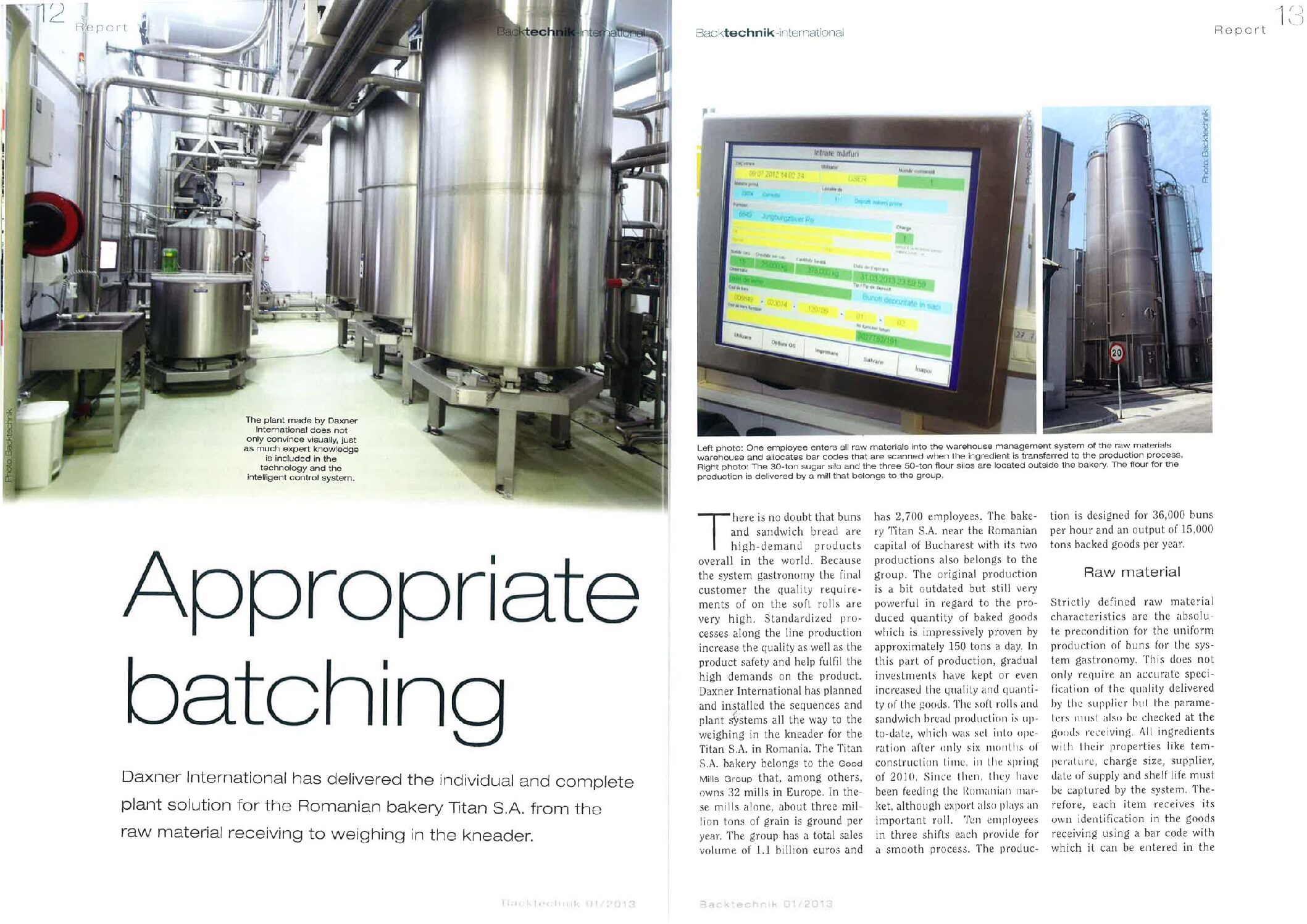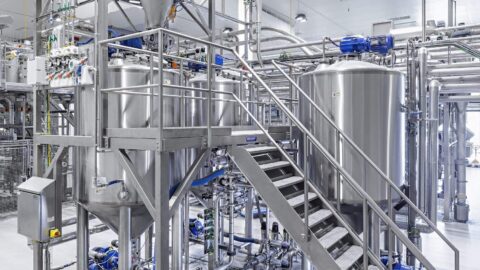Daxner delivered the individual and complete plant solution for a renowned industrial bakery from the raw material receiving to weighing in the kneader. The production is designed for 36,000 buns per hour and an output of 15,000 tons baked goods per year.
Description
Raw material
Strictly defined raw material characteristics are the absolute precondition for the uniform production of buns for the system gastronomy. All ingredients with their properties like temperature, charge size, supplier, date of supply and shelf life must be captured by the system. Therefore, each item receives its own identification in the goods receiving using a bar code with which it can be entered in the warehouse. lf the raw material is requested from the production area, an employee reads the raw material out again and transfers it into the production system. The system automatically performs usual queries, e.g. “first in first out” or minimum order quantities, and with this, it ensures a smooth process. Large quantity ingredients like flour and sugar are stored in outdoor silos of the bakery.
Three aluminium silos with a capacity of 50 tons each have been installed for the wheat flour delivered by the mill that belongs to the group. The sugar silo is made of stainless steel and has a capacity of 30 tons. All containers are placed on weighing cells that continuously report the fill level to the system and also serve for goods receiving control.
The oil, required for the production is stored in dedicated tanks. Two tanks each are connected to the conveying system. If a tank has been emptied, the system automatically passes over to the second tank and there will be enough time to provide the raw material from the warehouse. The most important reason for the selection of such an extensive warehouse management is, in addition to continuous availability, the traceability of the raw materials in the whole system. lt must be known which raw materials have been processed for each batch. Only in this way, the customers’ strict requirements on the company can be fulfilled. Among others, the bakery is controlled by the American Institute of Baking (AIB).
Starter dough and weighing
Great importance was placed on to a highly-automated line which is reflected, among others, by the weighing process and the production of the starter dough. All high-quantity ingredients are automatically fed into the system. The small-quantity ingredients are prepared manually.
One part of the dosing system is the yeast dissolver with a capacity of 500 liters. After a short agitating phase, shorter than ten minutes, the liquid yeast is ready to be pumped into the storage container right beside it. Now there is enough time to start the automatic cleaning program to clean the yeast dissolver and to prepare it for the next use.
The system receives the main ingredient of the starter dough, the wheat flour, from the external silos. At first, the specified quantity of flour is filled into a first scale. If the weight is reached, the flour is led to the second scale that is installed directly below the first one. While the starter dough is being mixed with the other ingredients, i.e. water, yeast, and oil, in the dough preparation unit, the first scale is ready again for providing the next batch. The dough is filled into two maturation tanks with a capacity of five tons each.
The starter dough tanks are filled from the bottom up. This design avoids dough deposits on the agitators and in the upper area of the fermenter. None of the three fermenters are filled with flour. This ensures the compliance with the hygiene standards because no flour dust occurs. At temperatures between 25°C and 30°C and a maturity period between two and eight hours depending on the operation, the dough has enough time to develop. The starter dough is moved in specified cycles to intensify the process of maturation.
After the end of the maturation period, the dough is pumped into storage containers. With this, the product goes via a plate heat exchanger that cools the mass down very fast to approximately 5°C. An important point of the dough production is the temperature of the ingredients that is also decisive for the final temperature of the finish-kneaded dough. For this reason, an extensive cooling system has been integrated that cools the individual ingredients down to the specified temperature. For this purpose, some tanks are designed as a triple wall structure to enable the coolant to circulate effectively. The storage container is designed in the same way to avoid the further development of the starter dough and to provide a stabile buffer for the production.
The ingredients fed into the kneader are weighed by a unit installed by Daxner. ln this case, the dough temperature is kept by cooled ingredients and temperature controlled water. The storage tanks are cleaned using rotating cleaning nozzles. The waste water can be discharged via separate outlets. The pipes are cleaned by a big cleaner. The big cleaner is put into the system through the launcher and is pushed to the receiver by water pressure. To return the big, compressed air is built up which moves it back to its starting position.
Key components
for this solution
Sounds interesting?
Let us know.
Send us your inquiry and a technical sales person is calling you back to talk about your projects or find a DAXNER partner company around you.

























